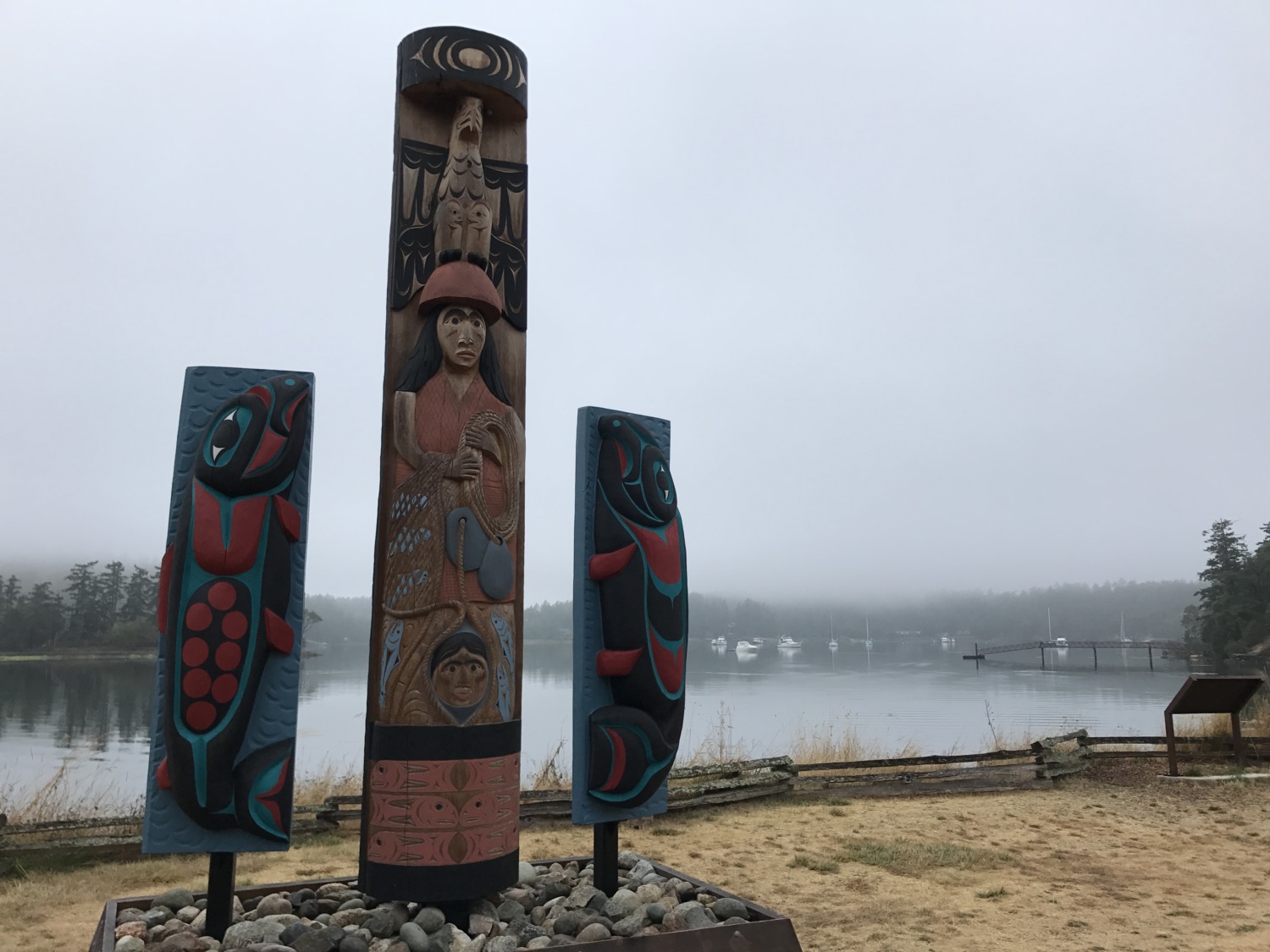Last year, to celebrate the Centennial of the National Park Service, San Juan Island National Historical Park installed a totem pole. This totem pole was a gift from the Lummi Tribe in celebration of their ancestral claim on the land. Today the totem pole stands tall and proud on the edge of the parade ground beside the beach. But its story is more complex than this simple explanation.

The Coast Salish people inhabited the San Juan Islands long before they were called the San Juans. They fished and hunted on the islands. Because resources were abundant, the native population lived relatively peacefully. If white people claimed the land, the Coast Salish left them to it and moved to other land.
The Coast Salish fished in Garrison Bay where English Camp is currently located. They fished in the bay and went clamming on the shore. The clamming was so good that, over the course of hundreds of years, a shell midden grew until it was 10 feet high, 40 feet across, and 120 yards long. In the middle of the midden, the Coast Salish built a longhouse that served as a shelter for anyone who came to the island. The tribes preferred to establish villages on the mainland, but they camped on the islands for months at a time.
When Americans and British came to the islands, the Coast Salish people had been decimated by the white men’s diseases. No one was living on San Juan Island, so the British and American Settlers felt free to come in and claim the land as their own. Of course, that led to the Pig War and the dispute over who owned the San Juans. Even though the Coast Salish considered the islands their ancestral land, the British and Americans took the land without feeling a treaty with the native peoples was necessary.
By donating the totem pole to the National Park, the Coast Salish people are again claiming this land as their ancestral home. The San Juan Island National Historical Park is working with them to celebrate the shared heritage and do a better job of telling the Coast Salish story.
The beautiful center totem pole was carved by Temosen Charles Elliott Tsartlip, a member of the Lummi Nation. The two salmon story boards that frame it were carved by Jewell Praying Wolf James. The totem pole is a Reef Net Captain pole and together these poles tell the story of reef nets and their importance in catching the salmon that were so abundant in these waters. The title of the poles is “Spirit of the Sxwo’le.” Sxwo’le means reef net. The gift represents a plea for balance, understanding, and sustainability.
The totem pole is a reminder that the British and Americans were not the first people on this island. As a part of the national park, it allows us to tell the story of the people who lived on this island before the conflict represented by the Pig War.

It’s really quite disturbing what was done to the native peoples. Good to see that the history is being told and the culture respected. The totem poles are fascinating!
So far the parks we have been working have a good historic relationship with the Native Americans in the area. That will change next summer when we are at Pipe Spring – but you will have to wait for that story!